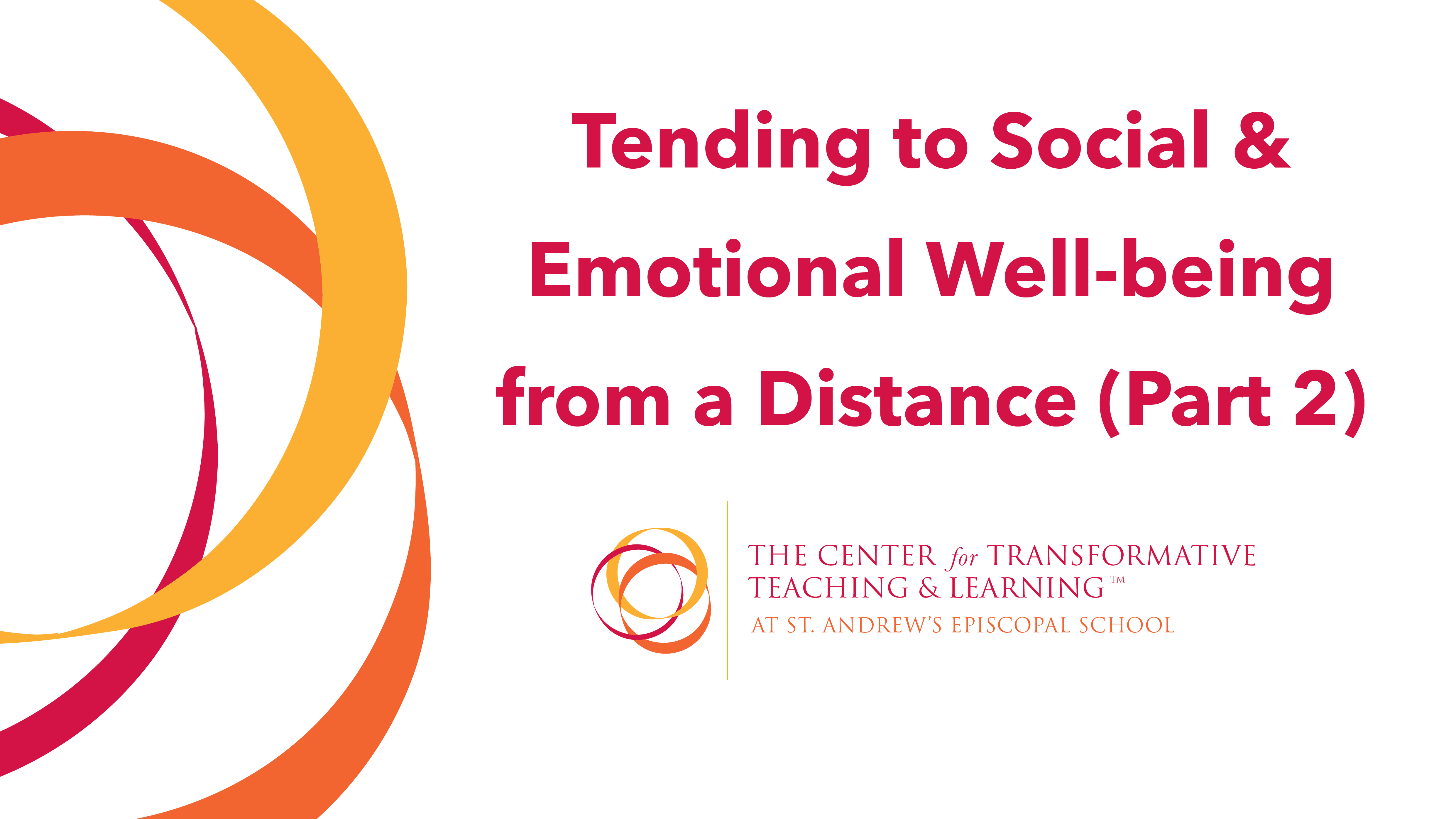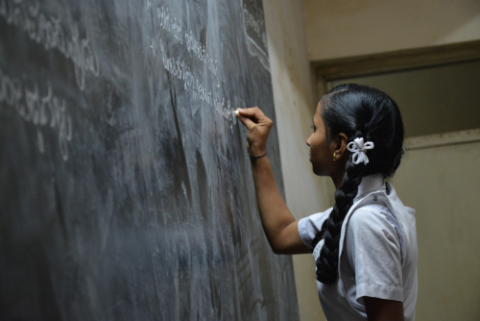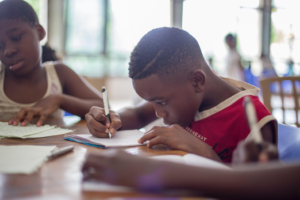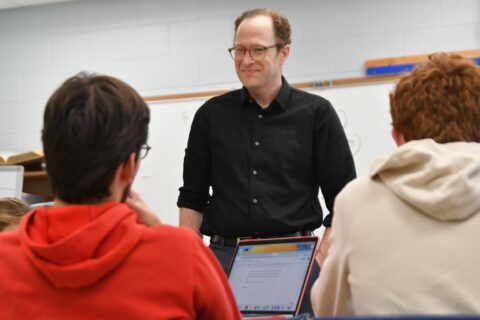By Eva Shultis
This is the second installment in a two-part series. If you missed Part One, please take a moment to read that first – because beginning with ourselves is non-negotiable, and checking in with our students and their families can inform the choices that come next.
We’ve reached the halfway mark of The Great Distance Learning Experiment for the 2019-20 school year. Here at St. Andrew’s we’ve taught five weeks of online classes and have five more to go. BIG VIRTUAL HIGH FIVE to all my St. Andrew’s colleagues. And to our friends in schools on slightly different timelines, I hope you take a moment to celebrate, whenever that milestone arrives for you.
Celebration is important because it’s simultaneously encouraging and daunting to be “halfway.” After the initial flurry of activity required to get virtual school up and running, I suspect many of us are coming down from an adrenaline rush. What used to feel surreal is beginning to feel more normal—the dust is settling and this new shape of our lives is still here. I imagine our students are experiencing a similar emotional arc. I’ve been reminding myself that we just built our planes while flying them, and getting the whole fleet airborne is an incredible achievement; on some days, that alone is good enough. And the rest of the time, I’m wondering how I might steer my seventh-grade Life Science plane somewhere even more interesting, now that we’re up here.
3. Mind the balance of COVID-19 and other content
Because this crisis touches all aspects of our lives, I’m simultaneously excited about the constellation of curricular connections we could draw (biology, psychology, ethics, mathematics, economics, history, government, world languages, literature, every form of art!) …and feeling about two news articles away from my personal saturation point at any given moment. Grappling with real problems can offer students a sense of purpose and relevance, which are powerful motivating forces. Now that students are directing their own learning—and the importance of school may feel dwarfed by the enormity of everything else they’re facing—it’s tempting to harness that power. I also believe fear stems from lack of understanding, and for many of us, learning more and forming connections to things we do know can be comforting. But for some folks, it’s more helpful to preserve a sense of normalcy and have something else to think about. I don’t think there’s one correct answer, beyond trusting that we’re all wired differently for good reason. If we each do what feels authentic to our disciplines, appropriate for our grade levels, and true to our individual voices as teachers, I’m inclined to think the balance will shake out naturally. That said, it may be wise to take a quick poll of our grade-level colleagues, just to be sure—especially as we’re designing our final experiences and assessments of the year. And as always, we should check in with students about how our choices are landing for them.
4. Intentionally build moments of fun and connection
As fired up as I get about curriculum design, I know that’s not really the thing that makes school meaningful for our students. Learning to navigate relationships—forming and testing and repairing and reshaping them—is their most important developmental task. Strong, positive relationships are also the foundation of learning and the most powerful buffer against stress and trauma (see this article from Teaching Tolerance in which experts from the National Child Traumatic Stress Network emphasize the primacy of relationships over completion of assignments in this challenging moment). Your mileage may vary—but I’ll share a few relational observations from my own seventh-grade class:
- I’ve noticed that the emotional tone of each class feels amplified in the virtual space—the pendulum seems to swing more resolutely toward upbeat or downcast early on, perhaps because we’re more susceptible to emotional contagion when we’re staring at each others’ faces on video calls. I’m finding it requires more intentional work to set a positive tone. The Collaborative for Academic, Social, and Emotional Learning has a great playbook with strategies for welcoming, engaging, and closing optimistically.
- To date, my virtual classroom has been more teacher-mediated than I’d accept in person, I think because the student-centered practices I’d typically integrate on the fly require more advance planning. In the coming weeks, I want to scout ahead for opportunities to reintroduce think-pair-sharing, jigsaws, group work, interviews, and peer review. I also want to set up discussions that I don’t mediate and have students create work for which I am not the sole audience.
- Humor and playfulness that bubble up organically when we’re all in a room together need extra space cleared for them now. I’ve never been big on games, but a virtual pictionary review of important terms has become my favorite part of the week. I also haven’t thought much about “managing behavior” lately. Last Friday, when two of my students logged on from their backyard trampolines, I briefly considered asking them to stop bouncing—and instead asked if anyone else had a trampoline they wanted to relocate to (at which point two more students ran outside to join in). More than maintaining control, it feels important to invite fun and connection—and protect them fiercely however they show up.
5. Help students find new depths within themselves
While intergenerational critique is timeless, I think Gen Z has borne the weight of a particularly unfair diatribe about overprotection, immediate gratification, self-centeredness, and lack of resilience. I suspect all of that is about to turn on its head. At best, the challenges they experience in this formative period of their lives offer unprecedented opportunities for growth. Our students are already taking greater ownership of their learning than we ever had to. I also suspect they know, as this Edweek article gently reminds us, that online learning is not the only way to learn. Within our spheres of influence, I wonder where we can make room for them to…
- Read books
- Connect with nature
- Practice mindfulness, gratitude, and empathy (resources from The Child Mind Institute, Better Kids and Making Caring Common, respectively)
- Identify and pursue individual passions (the 20% Time/Genius Hour model can lend some helpful structure, here)
- Develop their voices in writing and art (UNICEF’s Voices of Youth project is an incredible sharing space)
- Document and reflect upon history as they live it (English teacher Kelly Gallagher created a beautiful “Coronavirus unit” which could be adapted for any grade level)
- Serve others (St. Andrew’s students have opportunities through One Pride and beyond)
I hope our students develop and surpass us in all of these areas, because this crisis is illuminating many social systems they’ll need to help repair. At most: can we get them started thinking about the abundant design challenges they’ll inherit? At a minimum: can we support the skills and dispositions that will help them tackle these challenges successfully? I’ve always believed, and believe even more now, that we’re teaching young people so they can do what we haven’t been able to yet. Witnessing their patience, resilience, and the individual sacrifices they’re currently making for the collective good, I’m proud to say they’re well on their way.
Eva Shultis is the Associate Director for Program Development & Research for the CTTL. Eva contributes to the research and development of Neuroteach Global, facilitates workshops for teachers and school leaders, and coordinates the Science of Teaching and School Leadership Academy. She also teaches and advises 7th graders at St. Andrew’s Episcopal School (though Biology and Psychology equally hold a special place in her heart). Eva has taught middle and high school science since 2010, interspersed with work on problem-based learning at the New England Board of Higher Education and research on causal understanding at Project Zero. She cares deeply about the intersection of cognitive science and equity work. Eva earned her Sc.B. in Human Biology from Brown University and an Ed.M. in Mind, Brain & Education from the Harvard Graduate School of Education.




